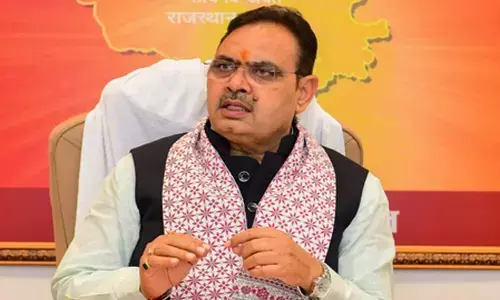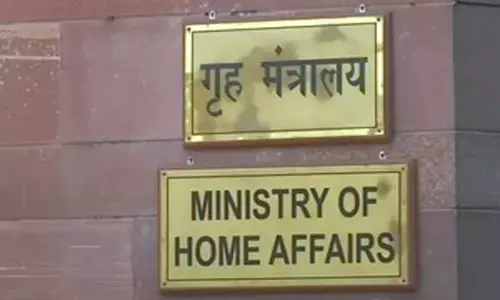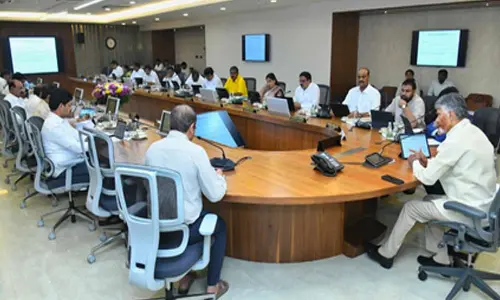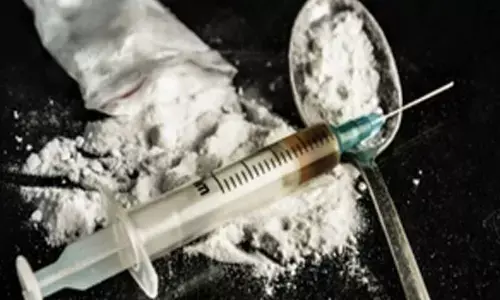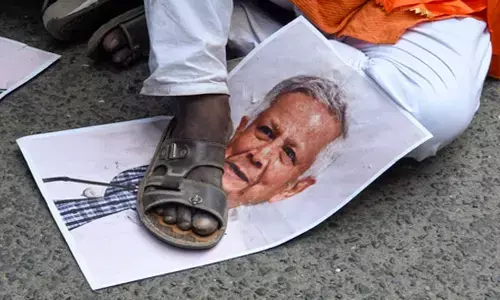35 years on, misery still haunts Indravelli victims

The scars of Indravelli carnage in which scores of innocent tribals lost their lives and hundreds sustained injuries in police firing 35 years ago remain still afresh.
The survivors and injured victims of the mindless police massacre 35 years ago on the same day live in abject poverty as no financial aid was provided to them so far
Adilabad: The scars of Indravelli carnage in which scores of innocent tribals lost their lives and hundreds sustained injuries in police firing 35 years ago remain still afresh. The peaceful agitation of tribals of the agency areas in the district against the ruthless exploitation by the landed gentry led to the massacre as the government used brute forces to suppress it, fearing that the erstwhile People's War Group (PWG) might resort to large scale violence in the guise of the movement.
The tribals of the agency area were largely dependent on agriculture, podu cultivation and collection of the forest produce for their livelihood. In the absence of legal rights on the lands cultivated by the tribals, the landlords held sway over them through their henchmen. The innocent tribals were left with no other option except selling their produce to the landlords at throwaway prices. The landlords amassed wealth by fleecing the tribals.
Under the aegis of the Girijana Rythu Coolie Sangham (GRCS) the tribals launched an agitation demanding land pattas and remunerative prices for their forest produce. The GRCS planned a huge public meeting at Indravelli on April 20, 1981 to press for their demands. A huge campaign was organised in the agency villages to mobilise tribals in a big way for the meeting.
Initially, permission was given for the public meeting but it was cancelled on the suspicion that the erstwhile PWG might exploit the situation to gain mileage. Prohibitory orders under Section 144 were promulgated to maintain law and order. A huge police force was deployed in Indravelli. A majority of tribals who already left their villages on foot or on bullock-carts to reach Indravelli, were not aware of the last minute cancellation of permission for the meeting and promulgation of prohibitory orders at the venue. Detention of tribals and preventive arrests were also made to thwart the public meeting.
After resorting to lathi-charge, the police opened fire indiscriminately at the tribals without any major provocation, which resulted in the death of 13 tribals (official figure). During the inquiries conducted by the fact-finding panels of the Civil Liberties Committee and people’s organisations, it was revealed that more than 60 innocent tribals lost their lives and over 1,000 people were injured in firing and lathi-charge.
The massacre received nation-wide condemnation from civil rights groups and people's organisations. It also led to initiation of several measures to better safeguard the interests of tribals in the agency areas. A memorial was constructed at Indravelli for the martyrs who lost their lives in the police firing. Some unidentified miscreants demolished the memorial in 1986. Following an agitation by the tribal organisations, the martyrs’ memorial was reconstructed in 1987.
Many families who lost their breadwinners in the police firing and those who sustained bullet wounds, are now living in absolute penury as no financial assistance has been provided to them so far. Narrating his plight to The Hans India on Tuesday, Bhim Ram of Vankatummayyapalli who suffered bullet wounds to his legs, said, “I cannot do my own things. My family is in absolute penury.”
Rajeswar Pittabangaram, who lost his mother Jangubai in the police firing, said, “We are leading a miserable life.” Mankubai of the same village who suffered a bullet wound, became insane. There are several injured tribals in Indravelli, Ichoda, Utnoor, Kerameri and other mandals who are living in total penury.
Human Rights Association vice-president Bhujanga Rao demanded that the State government to come to the rescue of the devastated families at least now. “It is the primary responsibility of the government to ensure the welfare of the tribals affected by the Indravelli carnage,” he said.
Woman injured in stabbing attack in Tokyo, suspect at large
Bengal cop booked for murder over mysterious death of woman home guard, SIT to probe case
Staffer recalls horror of 7-kg gold robbery by armed gang in Karnataka’s Hunsur
25-Year-Old Airline Cabin Crew Member Dies At Gurugram Party; Police Begin Investigation








